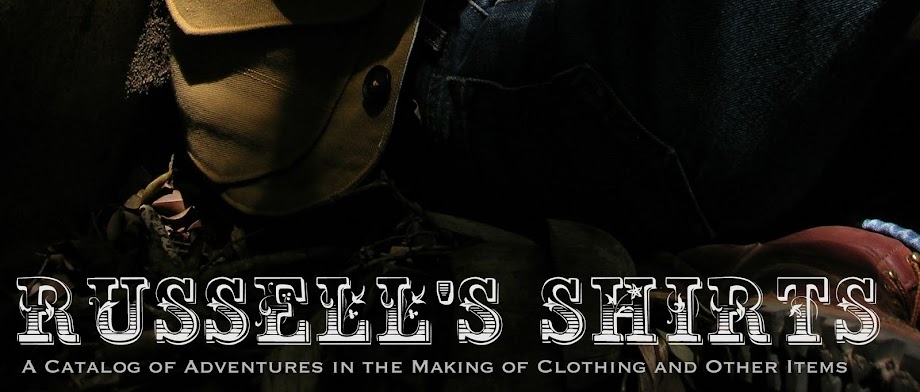So, I've been researching the heck out things to try and figure out what makes certain things look the way they do. A lot of it is the machine, which is why certain machines have an almost cult status among people into such details, but it's also the material and how it's been treated. For example: cotton. Raw cotton fabric shrinks, and so does cotton thread, but at a slightly different rate. This can result in puckering around the seam, which then wears faster and creates more interesting texture as it fades. Synthetics just don't shrink like that. I could go on, but here's some images of a few things that I have that I find inspiration in.
Triple needle stitching, this seam is special because it's width is narrower than what you would normally find on a triple stitched garment today.
Open-top buttons, with a two prong tack. Stronger than common closed-top tack buttons
Note the very high stitch count on this 1940's wool army shirt. This makes for a stronger seam. Also there is a luster to the thread. Most likely it was mercerized, a process which passes the thread through flame and a caustic solution to remove any fuzzy hairs and strengthen the fiber.
The inside of the same seam. Note the tight, close chainstitching. I'm hoping to re-create the look and strength of this stitch for my workshirts. All cotton thread is important.








No comments:
Post a Comment